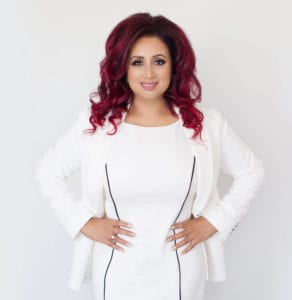Raj Girn: This week’s theme is branding and marketing, and I’ll be tackling the world of digital marketing today for all of you who have been reaching out to me to help you navigate this behemoth. My guest today is Swan Sit and she is one of Brand Innovators’ 40 under 40 and marketing women to watch.
Here is Part Two of our conversation:
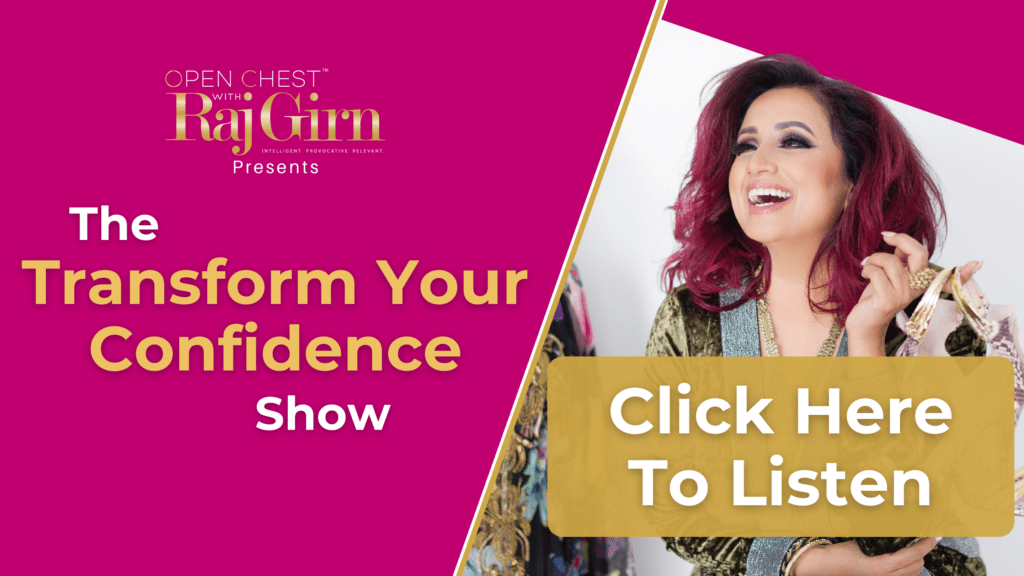
Raj Girn: What should a good marketing plan include today to set a business up for success? Because there’s so much to consider here, right?
Swan Sit: Oh, my gosh, it’s so hard. To be honest, I haven’t written a marketing plan in years because best laid plans, you mentioned this before, change all the time. In any given month, the algorithm could change on you for a platform. And if you built your entire annual strategy around that, then good luck. You have to rewrite it all. And if you’re doing a growth stage company, for example, I’m CMO of Any Energy. It’s an energy drink company with a bunch of Tik Tokers, Bryce Hall, Josh Richards. They have tens of millions of followers. So in theory that should sell itself. But with drinks, you have to get people to taste it. And so that means you have to get in the store because if you’ve never tasted a drink, it’s really hard to convince someone to buy a 12 pack. Now, we’ve been doing exceedingly well launching in a pandemic, getting people to buy 12 packs, but the next stage is coming. So I laid out this marketing plan thinking we’re going to go into a couple of small regional retailers, etc. We just landed the largest retailer in the US and we’re launching this summer.

Well, it doesn’t matter what my marketing plan said when that company says we will take your product, you drop everything to serve that. So what I do is the modern marketing plan for me. We lay out goals and strategy for the company. I ladder it down to marketing. I think about the things we just talked about. Do I have the right team and processes and technology? Even at a start-up stage, we do a rudimentary version of it. We have a content calendar. We still need process and some technology. But I leave a lot of that open to pivot points. It’s different than planning a $35 billion company’s marketing plan, and even that can change when the platforms or opportunities change on you. But when you’re a small growth stage company, I actually kind of layout the north star. I put my money in buckets where it makes the most sense and the months that it makes the most sense. But I have a very open conversation with my CFO.
I’ve done it at Arden. I did it at Any and I say this is subject to change. What I will do is move things between buckets. I might even move things slightly between months, but I’m going to try really hard not to move money between quarters because I know that messes up with our cash flow and we have to have a handshake deal on that because it makes our CFOs lives harder to plan around. But if you want to win in digital, you do not know what’s going to be hot in a year. You don’t even know maybe in three months. So leaving room for that space to grow and to pivot and change is really important. But the deal I make with the CFO, because, of course, this is terrible news for them as they’re planning cash flow, is everything I do, I’m going to be thoughtful about an ROI. Not everything will have one. But as I spend money on content or I drive advertising, I’m going to give you ROIs, I’ll give you analytics and I will not waste money. I’ll spend it like it’s my own. So that implicit handshake certainly helps because it gives me the flexibility to pivot, but it gives them the confidence that I’m much more numbers oriented than what an average marketer is accused of. And I will deliver money back into the business. And the good news is with ecomm, you’re able to do that.
“If you want to win in digital, you do not know what’s going to be hot in a year. You don’t even know maybe in three months. So leaving room for that space to grow and to pivot and change is really important.” ~Swan Sit
You know, it’s very interesting. So much of what you said there, you think it’s fundamental, but a lot of big companies aren’t getting this right Swan. So I want to ask you this. Another fundamental question, but one that I have people coming to me all the time with. So I want to ask you, is there ever a time when it’s too soon to go to market with your strategies? Where would it be to too soon, would you say?
It’s never too soon, as long as it’s done in a test and learn environment. Because that’s what digital’s allowed us to do. So back in the old days when you were buying TV or billboards, once you hit go, you are in. You could not undo the billboard. It is up. You can’t take it down and put it right back up the next week. In digital we can do that. So the thinking in marketing is drastically different. So what I would say is it’s never too early as long as you have a learning agenda and a purpose for it. So let me give you an example. Amazon has hundreds of thousands of products we choose from. A lot of them are branded, but a lot of them, where did that come from? I didn’t even know I needed that right? Instagram Ads too. I’ve never thought I would buy stuff off ads, but Instagram ads just know me.
So a lot of times the way people come up with what products to sell is, and I’ve recommended this to a lot of entrepreneurs, they put up an ad for a product and see if people buy it when they click through. It’s coming soon. Of course, they’re a little disappointed, but what a better way to actually test what consumers might want to buy. So if you have three product ideas in mind, hold everything equal in terms of who you think the audience, the reach, et cetera, is and test the three products. There’s a lot of companies now that just use advertising to determine what product to create next, and they’re super short life cycles. That might be the hot thing for the next three to six months, like a rainbow unicorn pool float. Now those are here to stay, which I’m happy about. But it started off like that. Like what do people want to buy for shapes of cool toys based on what people are clicking?
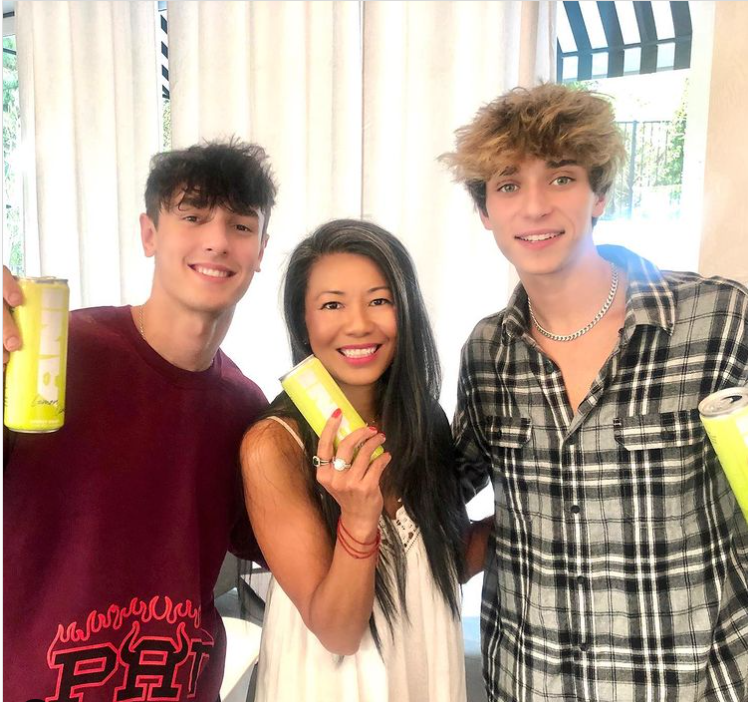
You have implicit audience research and you can do it as small scale for as little as a few thousand dollars a month. So if you’re being thoughtful about doing it, whether it’s testing a product idea or to be testing a marketing message, you might have a product and you’re like, I’m not sure which audience will resonate with it. Why do they want to buy it? Is it because it’s functional? Is it because it’s aspirational or does it create value? Test three messages. Remember to hold things steady and equal and then you’ll have a testing and learning agenda. So I actually encourage people to go earlier than they think to get feedback and it might be in the form of ads. It might be in the form of a Clubhouse room. However, you want to speak to consumers, use the fact that digital gives us incredible reach and one-on-one connectivity and do that research. Then I would then plug it back into the larger marketing plan and refine and tweak as you go.
I have to ask you this based off of what you just said there. Can you share any marketing myths that you feel that people need to know about, but they’re always kind of steering themselves in the wrong direction because we have content overload? We’ve got marketing messages coming out of our butt cheeks right now. And people don’t really know oftentimes why they’re going to market. So I’d love for you to share any marketing myths that you feel people need to know about and just not get it wrong.
People focus too often on the downstream output of the ad. How many times have we seen a commercial on TV and said, who paid for that? Because people feel like they need to put an ad up. We go back to the start of our conversation, Raj. We talk about product market fit, understanding consumers and serving a need they have. Then we talk about creating the right content that resonates with the segments of consumers and distributing it in the right channels to meet them where they are. If you skip all of that and you just throw an ad up, sometimes that might work. A lot of times we’ll see those ads and be like, who? What were they thinking? So the myth is you have to have something that captures people’s attention. Sure. Yes. That’s after you do all that pre-work. But viral is not a strategy. Viral is an accidental output of something that you do right.
“Viral is not a strategy. Viral is an accidental output of something that you do right.” ~Swan Sit
But if we just focus on the ad, then you end up missing probably who your target consumer is. And also the myth that you have to have it all figured out. No, you can actually use digital marketing as a test and learning arena for those messages, etc. You take a brand like Vegamour, they went 10x sales in one year. It’s a hair care company that focuses on hair loss ads, shampoo, conditioner, treatments and supplements. They spent seven months on Facebook figuring out who their audience was over and over, testing different products, messages, segments and cadence. After seven months, they figured it out. Their business went 10x in one year because of that. So they first figured out the product was we’ve got hair care that targets hair loss. Not a lot of brands do that.
We have a lot of cosmeceutical and skin care that treats, but we don’t have hair care that treats. So there’s a need. Then they said content. Here’s all the different messages we can go distribution. Here’s all the channels we could go. Once you figure out the magic formula, when you’ve got product meets content meets distribution, that’s where it goes gangbusters. If you look at the ads, they don’t have celebrities in them. They’re shot beautifully. But I wouldn’t say there’s anything iconic about it. Because I think Liz Arden was something that was outdated. We needed a sparkly ad. They just went on really good targeting, really good product, understand the consumer. So there’s different parts to do this. But if you look at a brand like Vegamour and how they crushed it because they understood the consumer, you’ll see that there’s lessons we can apply to everything, regardless if you’re selling a luxury handbag or paperclips.
Absolutely, and you know what I’ve been getting out of this conversation together with you, Swan, is data points. Marketing needs to connect to data, and a lot of people don’t even do that. Especially the creatives, and not so much the corporations and the business people, but creatives tend to not get that part dialed in. Is there any comment that you want to throw out that to those people in regards to understanding how to marry the data points to the marketing campaigns that you’re doing? So you can actually see whether what you’re doing is, in fact, getting to the right audience.
It’s really hard. You would think, from what I described before, that the toughest partnerships in legacy company are marketing and sales. But I just described through a few easy steps of aligning incentives, et cetera, you can fix that. But creatives can be the best partners or the toughest ones because they go so much on gut instinct. Creative comes naturally to people, the ones that are good at it. Of course, you can supplement with books and training and experiences, but they just live and breathe . . . They’re creative. How do you take a reason to somebody who actually does it from the gut? The good news is marketing is both left and right brain. And I talked a lot about the logic of marketing, but there’s a magic to the art and science coming together. And I lean into the art. Now, I’m not a creative, but I love being creative adjacent. And I love empowering my creatives to do their best work. If the creative ends up winning an award. Great. If it ends up saving the company, that’s in a turnaround even better.
And so we have to start aligning and thinking the way they do. Because for so long, the measure of great creative work was winning at Cannes Lion. But if we give them a great bonus because we measured the creative that year based on how well it’s sold through the product, would it change incentive behaviour? Same idea, right? So the Cannes Lion is still a great award to win. An Emmy from the Dream Crazy Award. Great. But what we started doing was at Nike tracking creative and how people responded to it and if possible tracking it all the way through to D to C sales and customer loyalty because not all content should be pushing a sale anyway. I think a lot of content actually should be around lifestyle, loyalty, etc..
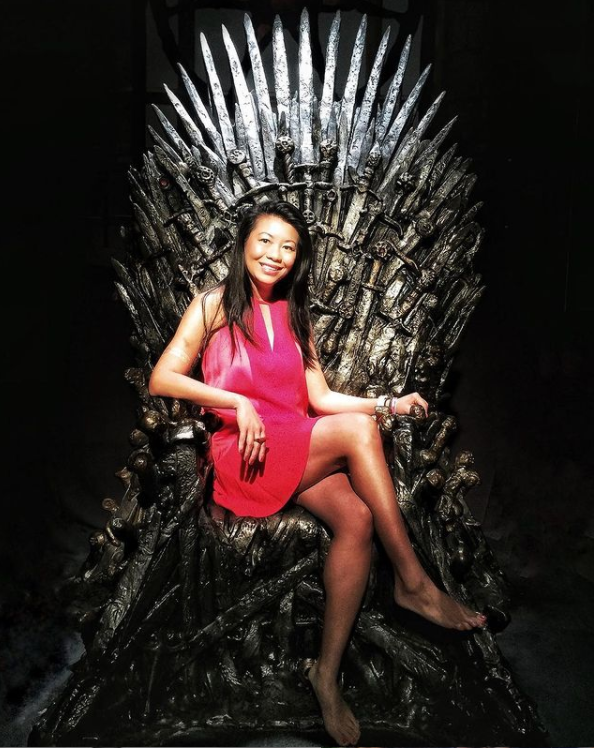
And one of the biggest complaints I had at Nike was I bought a running shoe one week and it was on sale, which is awesome, in a hot pink colour. The next week the same shoe came out in a different colour for the next season. And while it wasn’t on sale because it was a clearance item, there was a promo for friends and family. I’m like, wait a second. I just bought a shoe last week, while it’s a kind of cool hot pink color, not a very practical colour. A week later, you’re sending me a sale email on the same shoe and now I got last season’s colour? I feel kind of crappy about it. And now I could have gotten the new shoe at the same price. We’re missing the mark on it. So I actually think that second email should never have been by the same shoe because in the system it said she likes the shoe, let’s check the stocks and send her everything about the shoe.
The second email should have been: Have you opened your new shoes yet? Have you tried them? How do they fit? If not, here’s an easy click to go exchange for a different size or model or chat with a customer service representative to find the right shoe for you. And if it fits, great, the next message should be have you gone running in it? And did you know that Nike has a running app that can track all of your runs, tell you how your shoes are performing and when you need a new pair, and then that can tag into the lifestyle tracker or the fitness tracker, which shows not only what your calorie consumption is, but maybe use a digital body scanner. And we say, well, Swan, you’re a medium right now in this. But since you’ve been running for three months and actually tracking so well on the fitness app when we scan your body again, you’re now a small. So we’re going to default to a small and everything that you shop. I mean, there’s so many different ways of doing that.
So as we think about that communication between creative and marketing, they get excited when you think about the lifetime journey. It’s not just about the milestone campaigns, but when you get that consumer for life and you’re part of their journey every day, regardless of their buying a shoe, going on a run, showing off the streetwear style that they paired those shoes with, I think they get a little bit more excited about that because then we tell full stories about people’s lives. That’s what creatives are trying to do. They’re storytellers. So instead of hammering the same story about selling, selling, selling, to give them the the blank slate to talk about so many more things, that’s what I think gets creatives excited. But we have to do the education. We have to show them that putting a loyalty campaign message on a billboard, it doesn’t make sense, but serving it to the consumer after they bought the shoe and they did the first run with a running app, that makes a lot of sense. So bringing them along the journey, just like the sales people, to see that we’re part of a consumer’s life or omni channel and we’re solving needs, that’s where you win.
Right. Absolutely. Folks, we’ve come to the end of the show, I am so sad about that, Swan. There’s so much more that I could ask you and I’ve got to have you come back on so that we can kind of tackle some other areas. But I want to direct people to a place that you’re extremely active. Clubhouse is the place to go if you want to get daily nuggets of wisdom from Swan. Can you share a little bit about your Clubhouse handle and when you kind of hop in there so people can just hop in and learn more from you?
Absolutely, my Clubhouse handle is Swan. I was lucky to be early, so I was able to grab Swan. I’m also active on Instagram and Twitter as SwanSit, my full name, all one word. On Clubhouse I do a weekly room Thursday, 3 PM Eastern, with the exception of this week. But yes, I do a weekly Clubhouse room called Office Hours every Thursday at 3:00 PM Eastern. I love helping people. I love mentoring. And with a bunch of listeners in the audience, I get to mentor at scale. So that’s where you can find me. And then I do rooms all week. I do a dating advice room with the millionaire matchmaker Patti Stanger. I do a mentoring room with Marc Randolph, the co-founder of Netflix. And I can be found doing all sorts of rooms all over.
We have one Shark Tank-style pitch competitions where our investors are the co-founders of Android, Twitch, Netflix and they angel fund our entrepreneurs. We’ve had two businesses funded in three shows. We ran a singing competition where the winner won a recording contract with Chris Martin from Coldplay. I mean, that’s life changing. So the best way to do it is if you go to my profile on Clubhouse, they’ve added a new feature where you when you go to the profile, you see the events that are listed. You’ll see everything that’s coming up on my calendar. I’ve been doing a lot of nifty rooms and crypto rooms as well, more as a moderator that democratizes knowledge because I’m new to all of this as well and what I’m willing to do is ask the dumb questions that everyone else is a little nervous to do, because unless we democratize crypto or NFT, it’s not going to achieve the vision we keep propagating it for, which is decentralized and ownership.
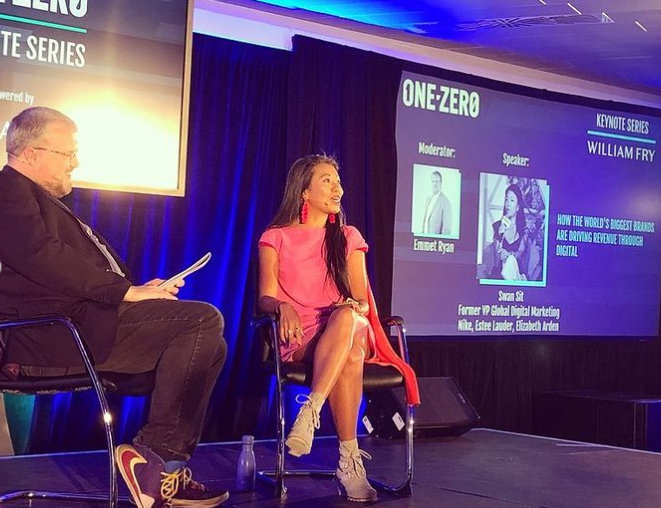
So I do a lot of those rooms where I play the noob, the novice, and ask questions and ask how do I get started on this? What do I need to understand? So it’s a variety of rooms and what I love about clubhouses is it’s ephemeral. So aside from my Office Hours, there’s nothing truly set in stone. It’s ephemeral. It’s who wants to show up and we’re moving with the times we pivot every week depending on what topics are new. So it’s a really great place to be, not just for me, but for all the thought leaders on there that are generously sharing their experiences.
Absolutely. It’s really it’s the most game changing app for people who are looking for advice from the people who are experts and are doing it. I don’t think there’s ever been a way that these people have been more accessible until Clubhouse came along. And that, I think, is the magic of being on that platform. So I want to ask you this: can anyone work with you one-on-one in a consultative capacity? Because, I mean, your wealth of wisdom and how you have this kind of way of looking at things in a very innovative and relative manner is something that everybody needs. Everybody out there needs this. Whether you are a legacy company or a company that is more middle management area where you or more service base or whether you’re just a creative that is looking to kind of really hone your lifestyle story when you go to market. Do you work with any of these? Can people hire you or are you too busy?
I do occasionally, but I have too many jobs now. I’m on the boards of three companies. I advise a VC and a stack. I’m CMO of Any Energy and I’m a creator. So all the time that I used to spend consulting, which I loved, is now spent on creating because I can broadcast stories and advice at scale. That being said, for the occasional opportunity, I do advisory consulting. So depending on the arrangement, if not me, though, I have an incredible network of business people, of marketers, of digital experts that I can help people farm that out to. So people are interested. You can find me on LinkedIn, Twitter or Instagram, DM we can route it to my team. There also swansit.com which has some information, but just reach out and if not me, I can definitely help someone figure that out. But I love advertising. I love helping companies grow. And I always say with my decades of experience in the business world, if I can’t be a good example, let me be a horrible warning. But either way, my experience, hopefully is helpful in one direction or the other.
“I always say with my decades of experience in the business world, if I can’t be a good example, let me be a horrible warning. But either way, my experience hopefully is helpful in one direction or the other.” ~Swan Sit
I love everything about what you just said Swan. Just to kind of close things off for those people who aren’t business owners, but are looking at entering into the marketing arena as a career, is there any advice that you can give to them?
First is absorb as much as possible. One of the best things that came out of the pandemic is free online content. For the first few months of the pandemic, my consulting business went soft because no one wanted to spend money with the uncertainty of the pandemic. So I went to all these online conferences for free. Absorb. There’s lots of also different websites like Master Class or a variety of other teaching mechanisms that have given offers two for one, etc. Learning is more accessible than ever and more affordable than ever. So absorb. The second piece, though, I would say is a little bit different. And this is more of like training your brain versus training your skill set. The first part was getting the skills.
The second part is any time you see something, say it’s a Geico ad with a gecko or a Staples ad or a Gucci ad. What was the thinking behind it? What were they trying to sell? What was the purpose? Work backwards, upstream, to try to get to what we said before, product market fit, content distribution. What were they trying to achieve with that? And if you can, then reverse engineer some of that thinking. You’ll make yourself a stronger marketer, learn off of what other people have already been doing, and then build your skillset around that. And then as you start doing this, your brain will naturally, every time you see something and be like, oh, that coffee, how would I reach a consumer? What would I do? It makes you better at it. And once you start building those examples in the portfolio, then you start networking in the industry. You start offering to help people.

Suppose you’re sitting in a Clubhouse room and there’s somebody from a brand in there, jump up on stage and say . . . For example, I worked with Timberland and a bunch of Clubhouse rooms and they were talking about regenerative agriculture. Raise your hand, pop up on stage and say, “Hey, Timberland, I love this about your brand. Have you ever considered this?” I’ve seen people get jobs that way. I’ve hired interns on Clubhouse from Clubhouse to work on Clubhouse. I ran like an Apprentice-style show where we interviewed people live on Clubhouse. The opportunities are endless. So you start connecting with brands or companies and you start suggesting interesting marketing perspectives from having done those online courses, from having trained yourself to think like a marketer, you’ll probably land a job from Clubhouse, from LinkedIn or all sorts of networking opportunities.
Any final words that you’d like to leave everyone with to help them navigate the world of digital marketing to win?
We did touch upon it, but to drive the point home, it’s really at the start understanding people. The number two, understanding data marketing is understanding people, right? If you’re trying to get people to make a decision, you have to influence them and you need empathy and understanding and an open mindedness to reach them and to build that connection. Once you have that, then you need data. The future of marketing is about data because you want to get the right message to the right person in the right place at the right time. So once you have that fundamental understanding of humans in order to build that connection, you have to personalize your approach to that person and meet them where they are. People and data.
“The future of marketing is about data because you want to get the right message to the right person in the right place at the right time. So once you have that fundamental understanding of humans in order to build that connection, you have to personalize your approach to that person and meet them where they are. People and data.” ~Swan Sit
Amen to that. That is everything, it’s the Holy Grail. Swan, what an absolute pleasure to be able to have a moment to kind of dive into your genius. I really hope that you come back again and we’re able to have another conversation. You just are truly sensational. I love everything about what you’ve accomplished and just the innovative ways that you’re connecting with people and giving back. It’s amazing. Thank you so much for being on the show. I really appreciate it. And I really appreciate you.
I appreciate everything you do, Raj. I know what you do is a labour of love. And you truly are doing what I’m doing. We’re trying to democratize information and access so more people have opportunity because talent is equally distributed, opportunities are not. So by interviewing people you’re able to give them touch points and a view behind the curtain on how this all works and hopefully give them access. So thank you for your gift to the community.
Thank you so much, Swan. And folks, thank you so much for hanging out with Swan and me today. I really hope that you got some real valuable insights from our discussion and that you understand the importance of being intentional with your digital marketing strategies to stand out, but also being nimble and being very, very aware of what’s happening out there each time things change and finding a way to ensure that you’re able to consistently be a part of the journey of your consumer.
For more trainings like this, please subscribe to our YouTube channel at The Open Just Confidence Academy. We’re on all podcast platforms everywhere as ‘The Transform Your Confidence Show.’ And I also encourage you guys to please join my free coaching newsletter community. Just head over to the website at www.theopenchestconfidenceacademy.com/newsletter, and also, as always, join our free professional development incubator on Facebook, Transform Your Confidence, because that’s when on a daily basis I pop in and I answer your questions.
My goal with this show as Swan just rightfully said, is to give back to all of you guys. I’ve spent 30 years in the entrepreneurial arena in three different industries. You guys know my story. And it’s important to me that all the things that took me so long to get to success that you’re able to get there a lot sooner because you know the things that you need to know that I didn’t know.
So thank you so much for joining me each and every week. Until next time, take care of yourself.
To contact Swan Sit: Mail, LinkedIn, Instagram, Clubhouse, Twitter










